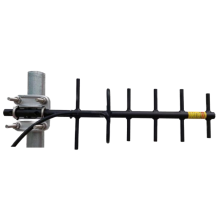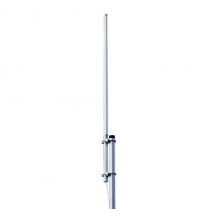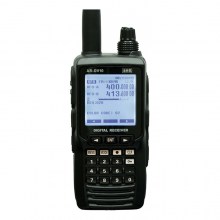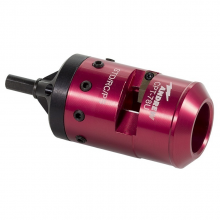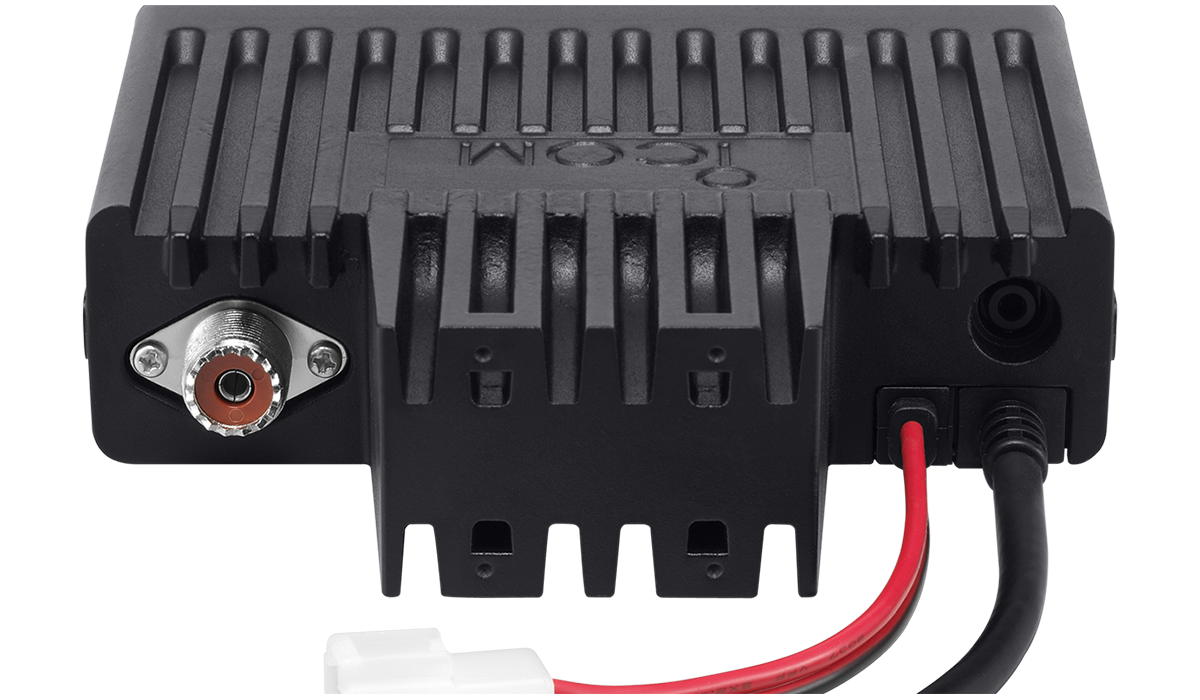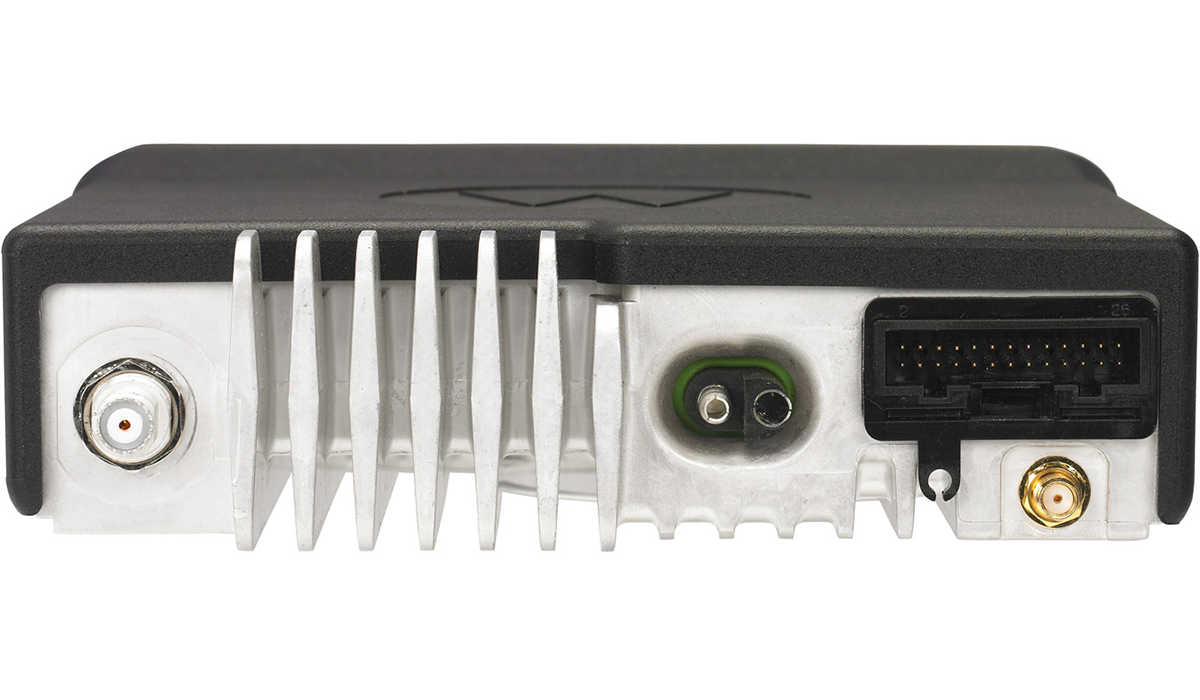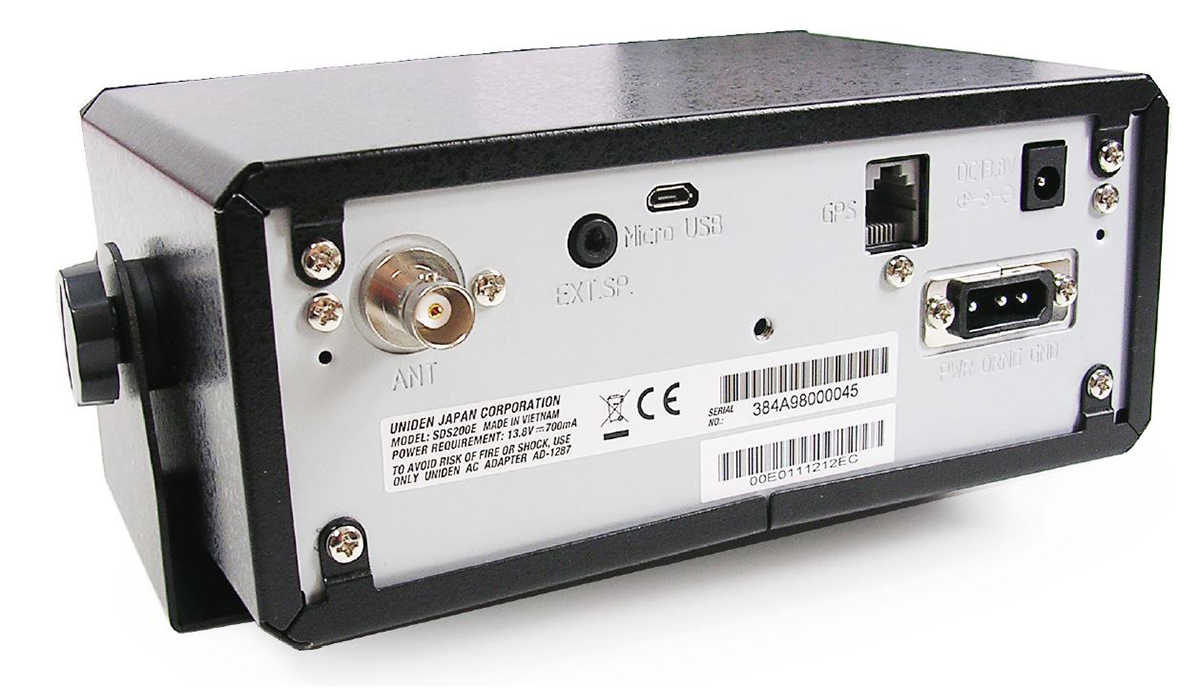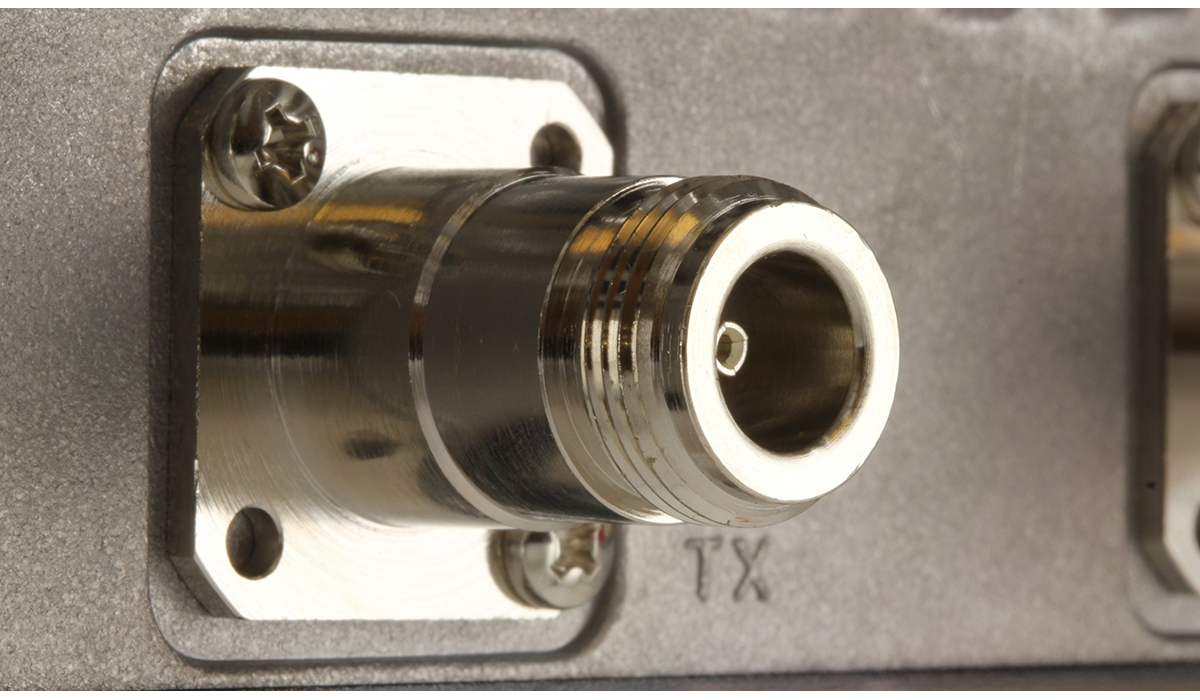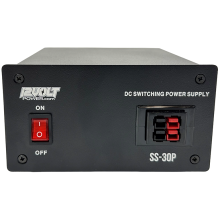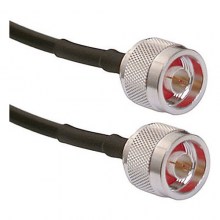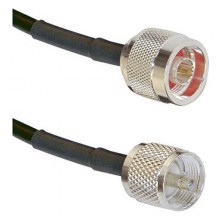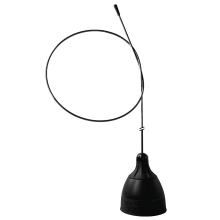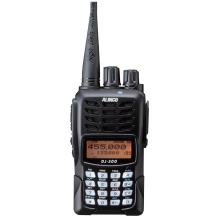Welcome to our Antenna Tutorial. I'll try to make this as quick and "no brainer" as possible.
Page Outline:
An antenna is an electrical device which converts electric power into radio waves, and vice versa. It is usually used with a radio transmitter or radio receiver. In transmission, a radio transmitter supplies an oscillating radio frequency electric current to the antenna's terminals, and the antenna radiates the energy from the current as electromagnetic waves (radio waves). In reception, an antenna intercepts some of the power of an electromagnetic wave in order to produce a tiny voltage at its terminals, that is applied to a receiver to be amplified.
Antennas are essential components of all equipment that uses radio. They are used in systems such as radio broadcasting, broadcast television, two-way radio, communications receivers, radar, cell phones, and satellite communications, as well as other devices such as garage door openers, wireless microphones, bluetooth enabled devices, wireless computer networks, baby monitors, and RFID tags on merchandise.
Ok now that we have the boring technical jargon out of the way, let's get to the meat of the matter - "which antenna do I need"? I'm glad you asked...let's examine the fundamentals and then take a look at some examples of two way radio antenna connections so you can easily determine what type connector you currently have on your radio or what connector you need for your new purchase.
Mobile Antennas (vehicular mounted antennas):
Before we get started please remember one important thing: 99.9% of two way radio failure is due to either the antenna being improper (meaning it's not made for the frequency used) or the antenna has not been tuned properly to accommodate the transmitting frequency. Your antenna is the most important part of your two way radio system however it is often the most overlooked component. Getting the antenna right is 100% critical to not only achieving good performance but also maintaining the life of your equipment. If you are a complete novice when it comes to two way radios and antennas you would be wise to take a few minutes and read the material provided here. A few minutes of reading may save you a big headache in the future; not to mention money.
With regard to antennas the basic rule of thumb is, the taller (or larger) the antenna is, the more db gain it produces. We won't go into antenna theory at this juncture, but if you are interested in learning what db gain is please visit our antenna theory page. However for right now let's just keep things simple....again, the taller the antenna, the more db gain it will produce. The more db gain, the better the performance. Now there are exceptions to this rule, but only in some unique circumstances (which is explained here). So, if you want to "reach out and touch somebody" (meaning you want to reach out as far as possible with your two way radio) than you want the tallest antenna with the most db gain you can afford or tolerate (as far as antenna height goes). You may however want to take into consideration your garage at home that you plan on parking your vehicle inside for antenna height; not to mention the McDonalds drive thru window. So basically it's a give and take: taller antenna works better (in most cases), however it could possibly interfere with your busy lunch schedule when trying to navigate the fast food drive thru window.
Second rule of thumb when it comes to vehicular mounted antennas is fundamental; mounting location of the antenna. The best place on any vehicle to mount your antenna is on the very center of the roof of the vehicle. For optimum performance one would mount the antenna on the center of a metal roof. If you have a metal roof than great! If not, what do I do then? Good question....In the case you don't have a metal roof (such as fiberglass or plastic) than you would want to use a "no ground plane" antenna. No ground plane antennas are specially constructed to work in situations where there is not a suitable "ground plane" available. A ground plane being a metal surface positioned around the base of the antenna that the radiating signal reacts with. If you have a metal roof it's always best to stick with a traditional antenna. The website here is categorized by the different types of antennas available so if looking for a no ground plane antenna one would look in the "no ground plane antenna" section of the website. Click here for an example. This rule of thumb for "no ground plane" antennas applies equally to non-metallic roofs as it does to antennas mounted "out in the breeze"; such as mounting your antenna on a mirror mount or in any mounting location where a proper ground plane cannot be achieved. Now don't get confused between "no ground plane" and grounding; such as grounding an electrical component. No ground plane when it comes to antennas is: a metal surface surrounding the base of the antenna in which the radiating signal reacts with. Example of a good ground plane antenna situation. Example of a no ground plane antenna situation. There are also ground plane "discs" available that will add a suitable ground plane to a non metallic surface in the case where one desires a standard antenna. For more information on what a ground plane is please visit our antenna theory page.
Next thing one needs to consider is the frequency or frequencies that one needs to transmit on. <NOTE = if you are not sure of the frequencies or even what two way radio you have please be sure and read our two way radio tutorial first). Let's use for example a VHF radio. Your VHF radio has a transmitting and receiving range of 136-174 MHz. Now let's say that you transmit on 152.2500 MHz. In that case you would make sure that which ever antenna you decide on that the antenna is made for transmitting on that frequency. Example would be the Laird Connectivity model # B1443 antenna. It has a useable frequency range of 144-174 MHz. Meaning that this antenna would work for you if you operate on our example frequency of 152.2500 MHz. However, you may ask; "what if I operate on a bunch of different frequencies"? Well, the answer comes down to a little arithmetic:
To calculate which antenna is going to suit you the best when operating on a number of different frequencies than you would do the following. First, take the highest frequency you transmit on and the lowest frequency you transmit on, add those 2 numbers together and then divide the result by 2; this will give you your "center" frequency. The "center" frequency is what one would use to determine what antenna they need. For example; let's say you transmit on 152.2500, 154.6500, 155.3250, and 155.7500 MHz. First you would take your highest frequency (155.7500) and your lowest frequency (152.2500) and add these two numbers together. Answer = 308. Now divide this number by 2. Answer = 154. So your center frequency would be 154.000 MHz. <NOTE = we are NOT concerned about receive only frequencies. You need only use the frequencies you actually transmit on for this equation>. Now that you know what your center frequency is, you would look for an antenna that is made to operate at 154.000 MHz. Our example antenna above (Laird Connectivity B1443) would be a suitable antenna because it has an operating range of 144-174 MHz. <Note = most high gain antennas such as our example given are tunable whips, meaning one would use the included cutting chart that comes with the antenna and cut the antenna whip for the proper length to accommodate one's center frequency - Each antenna includes instructions and it is an extremely simple process>.
The above example works for picking out virtually any antenna available no matter the frequency. However, there is also another very important factor to consider: how wide of a range of frequencies do you use? In other words, does the difference between the highest frequency you transmit on and the lowest frequency you transmit on exceed the antennas operating bandwidth? Let me explain...
The example we gave above; Laird Connectivity B1443, has a useable bandwidth of 6 MHz. Meaning it can be used in a situation where the highest and lowest transmitting frequency does not exceed 6 MHz of separation. Example would be; 152.000 and 158.000 MHz. In other words your lowest transmitting frequency is not below 152.0000 MHz nor does it exceed 158.0000 MHz. Another example would be: lowest frequency is 153.2750 and highest frequency is 157.950. In this case an antenna with a useable bandwidth of 6 MHz will work in this scenario. However let's say your lowest transmit frequency is 151.2750 MHz and your highest transmit frequency is 159.6250 MHz. In this case our example antenna with only 6 MHz of useable bandwidth will NOT work. <Note = Again, we are NOT concerned about receive only frequencies; we are only concerned with our transmitting frequencies>. Now you might say "Ok, now what do I do"? Good question. There's an answer to that problem as well. It's called "wideband antennas". Same center frequency calculating method applies as above but when our bandwidth exceeds 6 MHz we need to look for a wideband antenna. Some model antennas we carry may have a useable bandwidth of up to 20 MHz (meaning you could safely operate from 150-170 MHz for example), while some are as wide as 38 MHz (meaning you could operate from 136-174 MHz). There are also wideband - no ground plane antennas available as well. A combination no ground plane antenna that has a wide bandwidth. Neat huh?
Ok, so a person might say at this point; "Why do I have to go thru all this mess just to pick out a stupid antenna"? "Why can't I just use any old antenna?" Remember what we explained earlier? That 99.9% of two way radio failure is due to a poorly mismatched antenna? This is because of another rule concerning two way radio - SWR (Standing Wave Ratio). Having a high SWR as a result of a poorly matched antenna will be the death of your radio. So just remember to use the material provided here when choosing an antenna and you'll be just fine. <NOTE = If you want to check the SWR on your two-way radio system than check out our SWR meters>
Ok, so let's name some antennas here and what purpose they serve:
- High Gain Antennas: Offers high gain performance and usually includes a tunable whip.
- No Ground Plane Antennas: Can be used where a suitable ground plane is not available.
- Wide Band Antennas: Offers the user the opportunity to operate over a wider range of frequencies than can be achieved using a standard antenna.
- Quarter Wave Whips: Standard antennas that are pre-tuned for a certain frequency range and are also very affordable.
- Glass Mount Antennas: Made to mount on a window.
- Phantom/Disguise Antennas: Very small and as "incognito" as possible.
- Field Tunable Whips: Can be cut to length to accommodate it's given frequency range.
Ok, now that you know what kind of antenna you need; you need to pick out a suitable antenna mount. You might at this point say to yourself ; "Yeah I know what type of antenna I need and I know that the best place to mount an antenna is on the center of my vehicle's roof but what if I don't want to mount the antenna on my roof"? That's ok, there are plenty of different mounting options available. Let's look at the options:
- Permanent Hole Mounts: Yup, you guessed it - you just drill a hole thru your roof, trunk or where ever seems like a good place.
- Thick Surface Mounts: Same as permanent hole mounts but are used where the thickness of the material drilled thru exceeds the standard thickness of your average vehicle.
- Magnetic Mounts: Just plop it on top of your roof and go!
- Trunk Lip Mounts: Fasten to the "lip" of your vehicles trunk. No holes drilled. They use hidden set screws to hold it in place.
- L bracket Mounts: Uses a simple L shaped bracket to mount an antenna just about anywhere.
- Mirror Bracket Mounts: What a lot of truck drivers use. They simply clamp down to most any tubular shaped metal.
- Universal Lip Mounts: The most convenient way to mount an antenna where the user does not want to drill any holes in their vehicle but still desires a clean look.
- Luggage Rack Mounts: Attaches to most luggage racks. Another "no holes" mounting solution.
<Quick Note About Mounts> Antennas have different bases, meaning where the antenna physically screws down on to your mount. The majority of antennas we sell are what's known as 'NMO' type mounting. All mobile antennas on our website are marked in the description telling you what type of mounting types they are. There are 4 major mounting types:
- NMO : This is the most widely used mounting type. Images = <NMO Base> <NMO Mount>
- PL-259 : Common with amateur radio antenna products. Images = <PL-259 Base> <PL-259 Mount>
- N : These are commonly found on antennas that are 1200MHz or above. Images = <N Base> <N Mount>
- 3/8 x 24 Thread : Most common with some CB antennas. Images = <3/8x24 Base> <3/8x24 Mount>
When it comes to mounting types as described above, the basic rule of thumb is simple. If you choose an antenna that is marked as having an 'NMO' type mounting base than you need antenna mount that's made for 'NMO' antennas. Therefore an NMO type antenna requires an NMO type mount. Same as PL-259 type antennarequires a PL-259 type antenna mount. Example would be: The Laird Connectivity B1443 has an NMO base, so for instance you would need a NMO type magnet mount. All antennas and antenna mounts are clearly marked with what type mounting they are.
Ok, so you know what antenna you need...right? Now you might ask yourself; "what kind of connector do I have on the back of my radio"?; or you may ask; "what kind of connection is on the back of the radio that I want to purchase"? The answer to the second question is easy: the website here at The Antenna Farm tells you what connector is on the back of each radio we sell. In the description for each radio it will advise on what type connector you need and give antenna recommendations. However, if you already own a two way radio (or transmitting device) and do not know what type connection you have then let's look at the most common connections to determine what you have. <NOTE - if all else fails you could always search our connector section of the website to try and get an idea of what you have>
< SO-239 Connection
About 5/8" in diameter with outside threads and female pin hole
< Mini UHF Female Connection
About 5/16" in diameter with outside threads and female pin hole
< BNC Female Connection
About 5/16" in diameter and looks like a round barrel with little knobs (one on each side)
< N Female Connection
About 1/2" in diameter with outside threads and female pin hole
Note. If using the information provided above you are still unable to determine what connector you have on your two-way radio or transmitting device than please refer to the connectors category on the website.
Before we get started please remember one important thing: 99.9% of two way radio failure is due to either the antenna being improper (meaning it's not made for the frequency used) or the antenna has not been tuned properly to accommodate the transmitting frequency. Your antenna is the most important part of your two way radio system however it is often the most overlooked component. Getting the antenna right is 100% critical to not only achieving good performance but also maintaining the life of your equipment.
With regard to antennas the basic rule of thumb is, the taller (or larger) the antenna is, the more db gain it produces. We won't go into antenna theory at this juncture, but if you are interested in learning what db gain is please visit our antenna theory page. However for right now let's just keep things simple....again, the taller the antenna, the more db gain it will produce. The more db gain, the better the performance (click here for more information on gain). Now there are exceptions to this rule, but only in some unique circumstances (which is explained here). So, if you want to "reach out and touch somebody" (meaning you want to reach out as far as possible with your two way radio) than you want the tallest antenna with the most db gain you can afford or tolerate (as far as antenna height goes).
To calculate what antenna is going to suit you the best first take the highest frequency you transmit on and the lowest frequency you transmit on, add those 2 numbers together and then divide the result by 2; this will give you your "center" frequency. The "center" frequency is what one would use to determine what antenna they need. For example; let's say you transmit on 152.2500, 154.6500, 155.3250, and 155.7500. First you would take your highest frequency (155.7500) and your lowest frequency (152.2500) and add these two numbers together. Answer = 308. Now divide this number by 2. Answer = 154. So your center frequency would be 154.000 MHz. <NOTE = we are NOT concerned about receive only frequencies. You need only use the frequencies you actually transmit on for this equation>. Now that you know your center frequency you would look for an antenna that is made to operate at 154.000 MHz
Ok, so you know what antenna you need...right? Now you might ask yourself; "what kind of connector do I have on my antenna"?; or you may ask; "what kind of connection is on the antenna that I want to purchase"? The answer to the second question is easy: the website here at The Antenna Farm tells you what connector is on each antenna we sell. In the description for each antenna it will advise on what type connector it has. However, if you already own a base antenna and do not know what type connection you have then let's look at the most common connections and to determine what you need. <NOTE - if all else fails you could always search our connector section of the website to try and get an idea of what you have>
-
SO-239 or (UHF Female) - If your antenna has this type connection than your cable would need to be terminated with a PL-259 connector
-
'N' Female - If your antenna has this type connection than your cable would need to be terminated with a 'N' Male connector
-
'N' Male - If your antenna has this type connection than your cable would need to be terminated with a 'N' Female connector
-
7/16 Din Male - If your antenna has this type connection than your cable would need to be terminated with a 7/16 Din Female connector
-
7/16 Din Female - If your antenna has this type connection than your cable would need to be terminated with a 7/16 Din Male connector
Ok, that should be enough for you to get started picking out a radio, antenna and mount combination. If you are still unsure of what to look please feel free to email the sale department.
* <NOTE> Exception to the "bigger the antenna the better" rule would be the following:
In regards to mobile antenna operation, a tall high gain antenna is not necessarily a better choice. If for instance you operate in an area where you have a strong repeater system that is located on a high mountain or hill top and you operate below it in a valley, than a 1/4 wave or "unity" gain antenna may serve you best. Not that a high gain will not work mind you, but a 1/4 wave antenna may work just fine for the circumstances and it won't cost you as much money plus is much shorter and easier to deal with.
In regards to a base antenna operation; let's say you operate a 4 story hotel or perhaps a large lumber yard or work area outdoors. In this case a unity gain antenna would serve you best. #1, they cost less, #2, they "shower" down a signal better than does a high gain antenna. Thus in the case of a lumber yard for instance, a unity gain base antenna centered at or near the center of your work area (or hotel roof) would not only give you ample coverage but will also keep your over the air conversations from reaching the next town 50 miles away! Of course if you wanted to talk around the yard and talk 30 miles away than a high gain antenna would serve you best.



